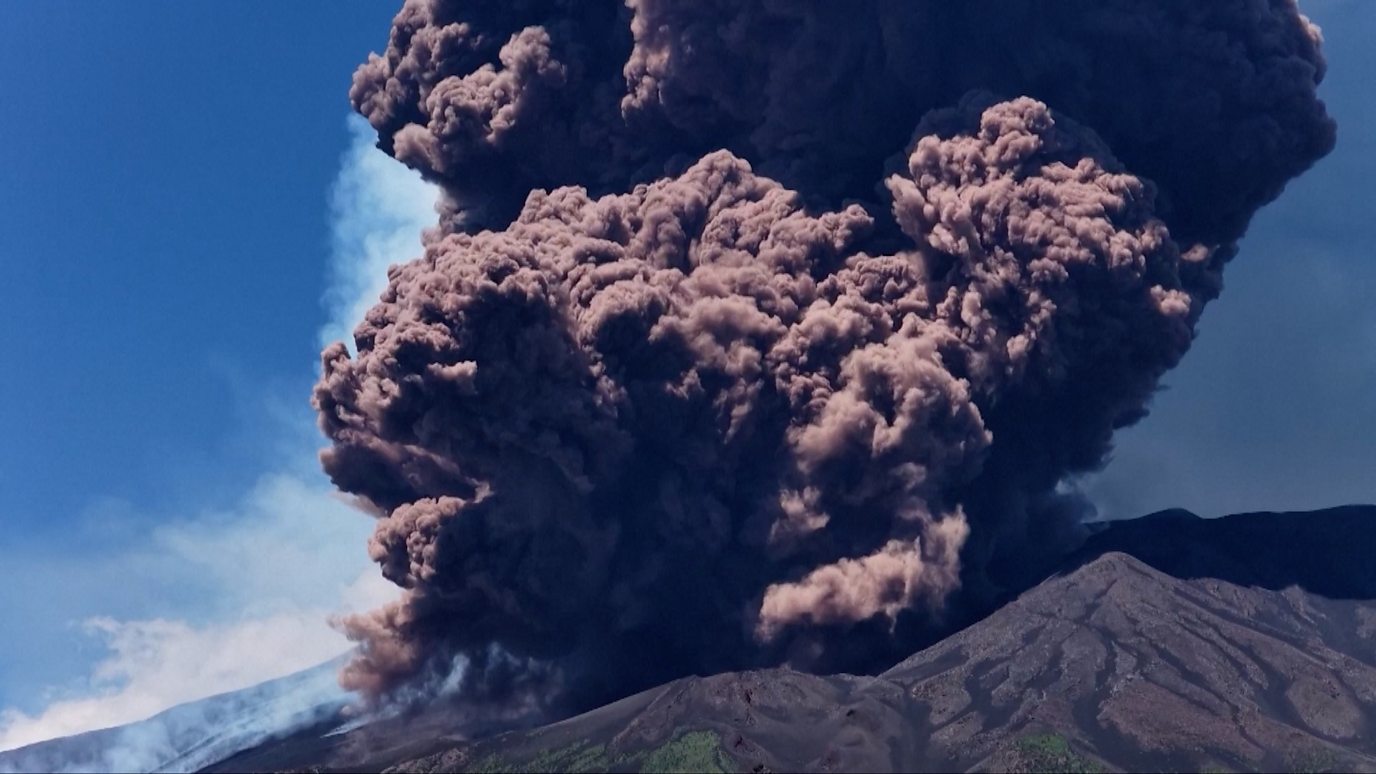Mount Etna erupting again – major health dangers
What’s happening?
Mount Etna, Europe’s most active volcano, has erupted again.
On 2nd June 2025, another eruption led to a pyroclastic flow possibly caused by the collapse of material from the northern flank of the southeast crater.
Mount Etna erupts as large plumes rise from Italian volcano – BBC News

Mount Etna. 2nd June 2025
A red alert issued for aviation authorities said the height of the volcanic cloud was estimated at 6.5 kilometers.
Mount Etna is a very active volcano in Sicily. The about 3,350 metre (currently) high volcano erupts several times a year; firing lava and ash high over the Mediterranean island.
The most destructive eruption was in 1669, when 15-20,000 people are said to have died, though this fact is contentious.
Over a six-month period in 2021, Etna erupted so much volcanic material that its height increased by approximately 30 metres.
Health risks of volcanic eruptions
All volcanic eruptions – including the current one in Mount Etna, Sicily – are a danger to health. Why?
Volcanoes spew hot, dangerous gases, ash, lava, and rock – all are powerfully destructive. People die directly from volcanic blasts.
But also volcanic eruptions result in other threats to health; such as earthquakes, floods, mudslides, power problems, drinking water contamination, and wildfires.
Health problems after a volcanic eruption include:
- Infectious and respiratory disease
- Burns
- Injuries (e.g. from falls)
- Vehicle accidents related to the slippery, hazy conditions caused by ash.

Mt Etna eruption on 12th November 2023
Volcanic ash
Exposure to ash can be harmful. Infants, the elderly, and people with respiratory conditions such as COPD (and other chronic lung diseases) may have problems if they breathe in volcanic ash.
Over the long-term, ash particles containing crystalline silica can cause silicosis, a chronic respiratory disease.
Small ash particles can also abrade (scratch) the front of the eye.
Gases
Most gases from a volcano blow away quickly. However, heavy gases such as carbon dioxide and hydrogen sulphide can collect in low-lying areas.
The most common volcanic gas is water vapour, followed by carbon dioxide and sulphur dioxide.
Other volcanic gases include hydrogen chloride, carbon monoxide, and hydrogen fluoride.
At low levels, gases can irritate the eyes, nose, and throat. At higher levels, gases can cause rapid breathing, headache, dizziness, swelling and spasm of the throat, and suffocation.
AKI prevention in volcanos
Acute kidney injury (AKI) prevention in volcanos, earthquakes, and other natural disasters, and man-made disasters, has been reviewed by Sever, 2022.
Sever points out that the most important pathogenetic mechanisms in AKI during earthquakes (that can be precipitated by volcanos) are: crush injury-related hypovolaemia, rhabdomyolysis and myoglobinuria.
Therefore, the most effective preventive measures are early and energetic fluid resuscitation (especially with isotonic saline) and also avoiding nephrotoxic medication.
When preventive measures fail and intrarenal AKI develops, dialysis is lifesaving, with a preference towards intermittent haemodialysis (due to medical and logistic advantages during disasters).
Summary
We have described ‘Mount Etna erupting again – major health dangers’. We hope it has been helpful. Thankyou for reading this article.

